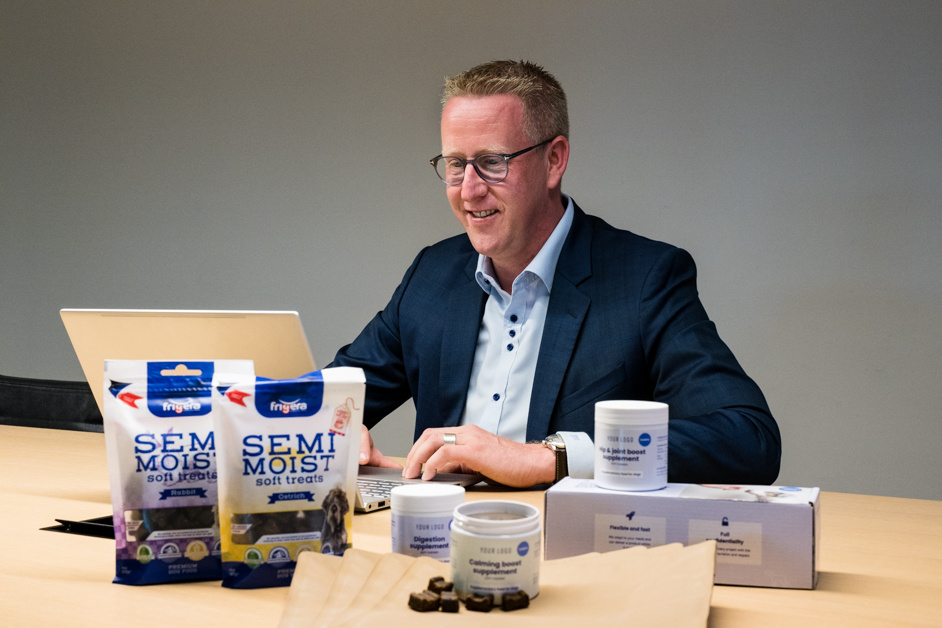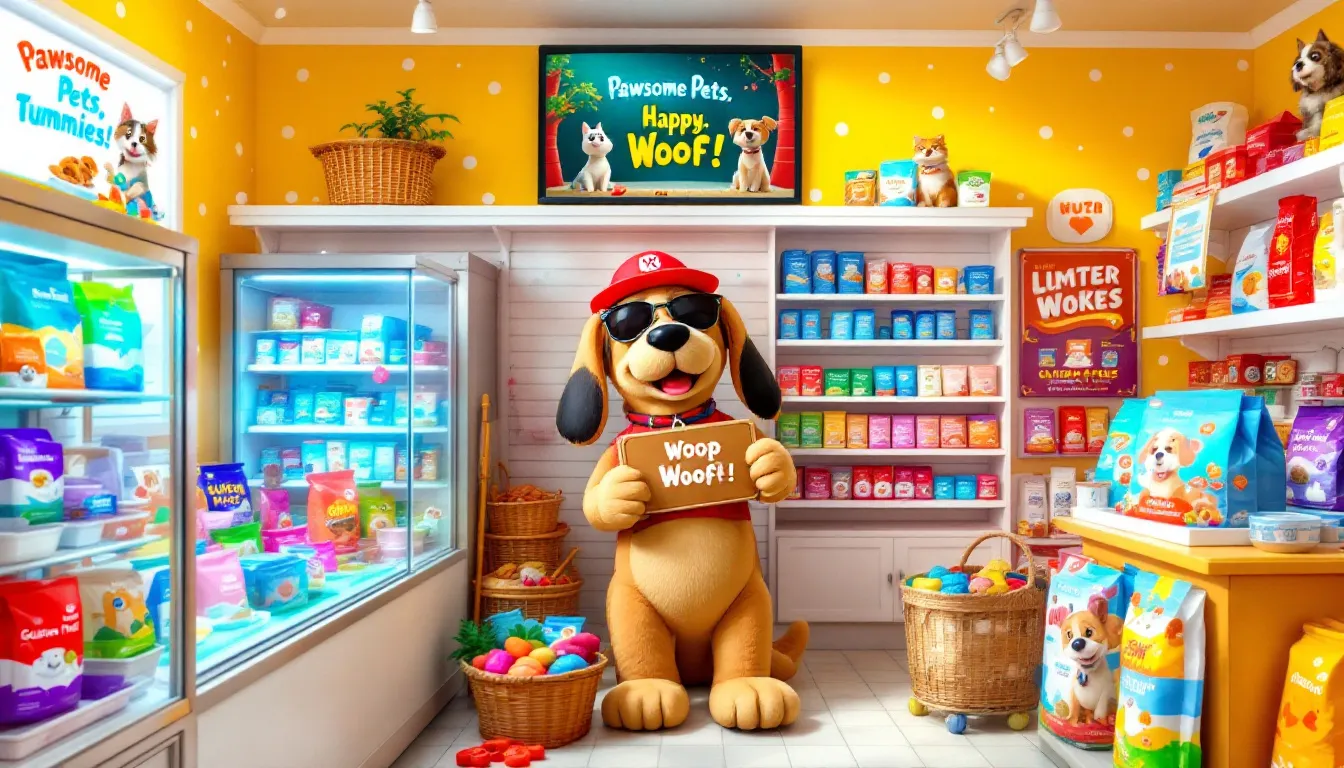How can storytelling be effectively used in pet food branding to create strong emotional connections and stand out in a crowded market? Storytelling in pet food branding is a powerful tool that goes beyond mere advertising by building emotional bonds with consumers. This article delves into key strategies to leverage storytelling, including crafting compelling narratives, building a strong visual identity and using digital marketing to amplify your brand story.
The role of storytelling in pet food branding

Storytelling in pet food branding creates emotional connections that go beyond the basic transaction of purchasing pet food. It helps pet food brands establish a powerful brand identity that resonates deeply with pet owners. These emotional connections increase brand recall, making it easier for consumers to remember and choose a particular brand when shopping for their furry friends. In an industry where numerous brands compete for attention, effective storytelling can make all the difference.
Storytelling also fosters product innovation by engaging pet owners and resonating with their experiences. When pet food brands share stories that reflect the values and experiences of pet parents, it makes those consumers feel valued and understood. This connection can inspire brand loyalty, as pet owners are more likely to stick with a brand that they feel genuinely understands and cares about their needs.
Storytelling helps brands stand out in a competitive market by highlighting unique values and missions. It differentiates them from others in the pet food industry, showcasing why their products are superior and more aligned with the consumers’ beliefs.
Ultimately, brands that utilize storytelling strategies can build strong emotional connections with consumers, fostering long-term loyalty and setting themselves apart in the bustling pet food market.
Crafting a compelling brand story
A compelling brand story starts with understanding the emotional bond between the brand and its customers. Successful pet food brands position their products as trusted companions, making the consumer the hero of their journey. Emotional storytelling builds lasting connections by reflecting shared values and experiences.
A strong brand story articulates what makes the products unique and how they meet customer needs. This clear connection is crucial for establishing a strong brand identity. For example, a brand strategy that focuses on natural and organic ingredients can highlight how its products contribute to the health and well-being of pets, aligning with the values of health-conscious pet owners.
Adapting brand stories to different platforms based on the audience’s communication style ensures effective engagement. A pet brand’s narrative should evolve over time to stay relevant and aligned with changing consumer preferences and trends. This adaptability ensures that the brand continues to resonate with its target market and maintain its relevance in the market.
Building a visual identity through storytelling

Visual elements are pivotal in enhancing brand storytelling. Images and videos make narratives more relatable and memorable, helping pet food brands create a strong visual identity. Video content taps into the emotional bond between pets and owners, showcasing products and creating memorable brand experiences.
A well-defined visual identity enhances brand recognition and makes it easier for customers to differentiate a brand from its competitors. This includes using a consistent color palette, unique typography and imagery that aligns with the brand’s message, whether it aims to be professional or playful. Quality packaging design also serves as a tangible touchpoint for customers, linking the product to the brand’s visual identity and improving brand visibility.
A brand style guide ensures consistency across all visual elements and uniform application across various platforms. Appealing package designs entice pet owners and influence product choice. For instance, Lily’s Kitchen establishes its brand identity by heavily relying on unique illustrations and colorful graphics, making their products instantly recognizable.
Utilizing digital marketing for storytelling
Digital marketing strategies amplify brand stories and connect with the target audience. Video content captures attention and fosters a personal connection, making it particularly impactful in pet food marketing. Regular social media posts maintain engagement and keep the audience informed about brand activities, fostering a sense of community.
Influencer content combined with paid advertising maximizes engagement and conversion rates. Email marketing engages customers through personalized communication, tailored promotions and relevant content.
Search Engine Optimization (SEO) enhances visibility in online searches, ensuring the brand’s content reaches a wider audience.
Engaging pet owners with interactive content

Interactive content engages pet owners and builds a community around a brand. Interactive online platforms and community features enable direct engagement with the audience. Polls, quizzes and contests enhance audience participation and build a sense of belonging.
Visuals engage viewers and convert them into customers. Micro-influencers’ engaged audiences trust their recommendations, making them effective for showcasing pet products. Leveraging these interactive elements allows pet food brands to create dynamic and engaging customer experiences.
Incorporating sustainability into your brand story

Sustainability is increasingly important in the pet food industry, so incorporating it into your brand story attracts eco-conscious consumers. Pet food brands are focusing on sustainability and sourcing transparency to align with consumer values. Pet owners seek pet foods that nourish their pets with quality nutrition and align with their personal beliefs and feeding philosophies.
Brands like Mystical Feline connect their story with environmental values. This strategy attracts eco-conscious consumers and educates them about sustainability for the future. Using eco friendly packaging materials like recyclable and biodegradable packaging is increasingly important in pet food packaging in recent years.
For example, Bug Bakes addresses environmental concerns by offering eco-friendly dog food made from insects. Sustainable practices, like sourcing organic ingredients and using recyclable packaging, help brands meet the growing demand for eco-friendly products. This approach benefits the environment and positions the brand as a sustainability leader in the pet food market.
Leveraging influencer collaborations
Influencer collaborations significantly enhance a brand’s visibility and credibility. These collaborations build trust and reach a wider audience through genuine endorsements. Influencers bring brands into pet owners’ daily lives with relatable stories and firsthand experiences, extending brand credibility beyond traditional advertising.
Partnering with influencers allows pet food brands to connect with new audiences and build trust through authentic experiences. These collaborations are a powerful tool in modern marketing, showcasing the brand’s products in a relatable and trustworthy manner, including pet influencers.
Personalizing the customer experience
Personalizing the customer experience builds strong relationships with consumers on a personal level. Pet owners increasingly seek personalized content pet food tailored to their pets’ specific needs and pet care. Exclusive discounts and educational content in email campaigns significantly enhance customer loyalty.
Strategically designed loyalty programs reward customers and motivate repeat purchases. Storytelling builds trust, with 81% of consumers requiring faith in a brand before making a purchase. Emotional storytelling makes consumers three times more likely to repurchase and recommend a brand.
Effectively communicating core purpose builds stronger trust and loyalty among consumers. Customer feedback is essential for refining branding and product strategies in the pet food sector. Personalizing the customer experience helps pet food brands create lasting relationships.
Measuring the impact of storytelling
Measuring the impact of storytelling is crucial to understanding its effectiveness. Effective brand narratives enhance consumer recall, with 92% of people preferring story-like ads. Key performance indicators for storytelling success include engagement metrics, brand mentions, conversion rates and audience reach, all of which can have a significant impact.
Tools like Google Analytics and social media analytics help businesses track the effectiveness of their storytelling strategies. Surveys and feedback forms collect qualitative data on how well a brand’s story resonates with its audience. These measurements help brands refine storytelling strategies for better results.
Working together with a consulting agency like GC Consulting

Consulting firms experienced in the pet food industry, like GC Consulting, help grow your business. GC Consulting specializes in exporting and creating new pet food brands for the global pet food market. With over 10 years of industry experience, they have built an extensive network of manufacturers, distributors and brand owners.
Partnering with a consulting agency like GC Consulting offers invaluable insights and strategies to not only expand your pet food business and boost sales but also enhance your storytelling and branding efforts. Their expertise supports you in navigating the complexities of the pet food market, ensuring healthy growth while effectively crafting and communicating your brand story.
Explore all their consulting services >
Summary
Storytelling in pet food branding is a powerful tool that creates emotional connections, establishes strong brand identities and differentiates brands in a competitive market. By crafting compelling brand stories, building visual identities, utilizing digital marketing, engaging pet owners with interactive content, incorporating sustainability, leveraging influencer collaborations and personalizing the customer experience, pet food brands can build lasting relationships with their customers.
Measuring the impact of storytelling and working with consulting agencies like GC Consulting can further enhance these efforts. Implement these strategies to transform your pet food brand and connect with your audience on a deeper level.
Frequently asked questions
Why is storytelling important in pet food branding?
Storytelling is crucial in pet food branding because it fosters emotional connections, enhances brand recall and builds a strong identity, allowing brands to differentiate themselves in a crowded marketplace.
How can pet food brands create a compelling brand story?
To create a compelling brand story, pet food brands must clearly communicate the uniqueness of their products while addressing customer needs and reflecting shared values. This approach fosters a deeper connection with consumers and enhances brand loyalty.
What role does visual identity play in pet food branding?
Visual identity is crucial in pet food branding as it enhances brand storytelling, making the product more relatable and memorable for consumers. Effective visual elements capture attention and convey the brand's message effectively.
How can digital marketing enhance storytelling for pet food brands?
Digital marketing can significantly enhance storytelling for pet food brands by utilizing strategies like video content, social media engagement and influencer collaborations to create meaningful connections with their audience. This approach not only amplifies brand narratives but also fosters a strong community around the products.
How can sustainability be incorporated into a pet food brand's story?
Incorporating sustainability into a pet food brand's story can be achieved by emphasizing eco-friendly packaging and sourcing organic ingredients, effectively aligning the brand with environmental values to resonate with eco-conscious consumers.




